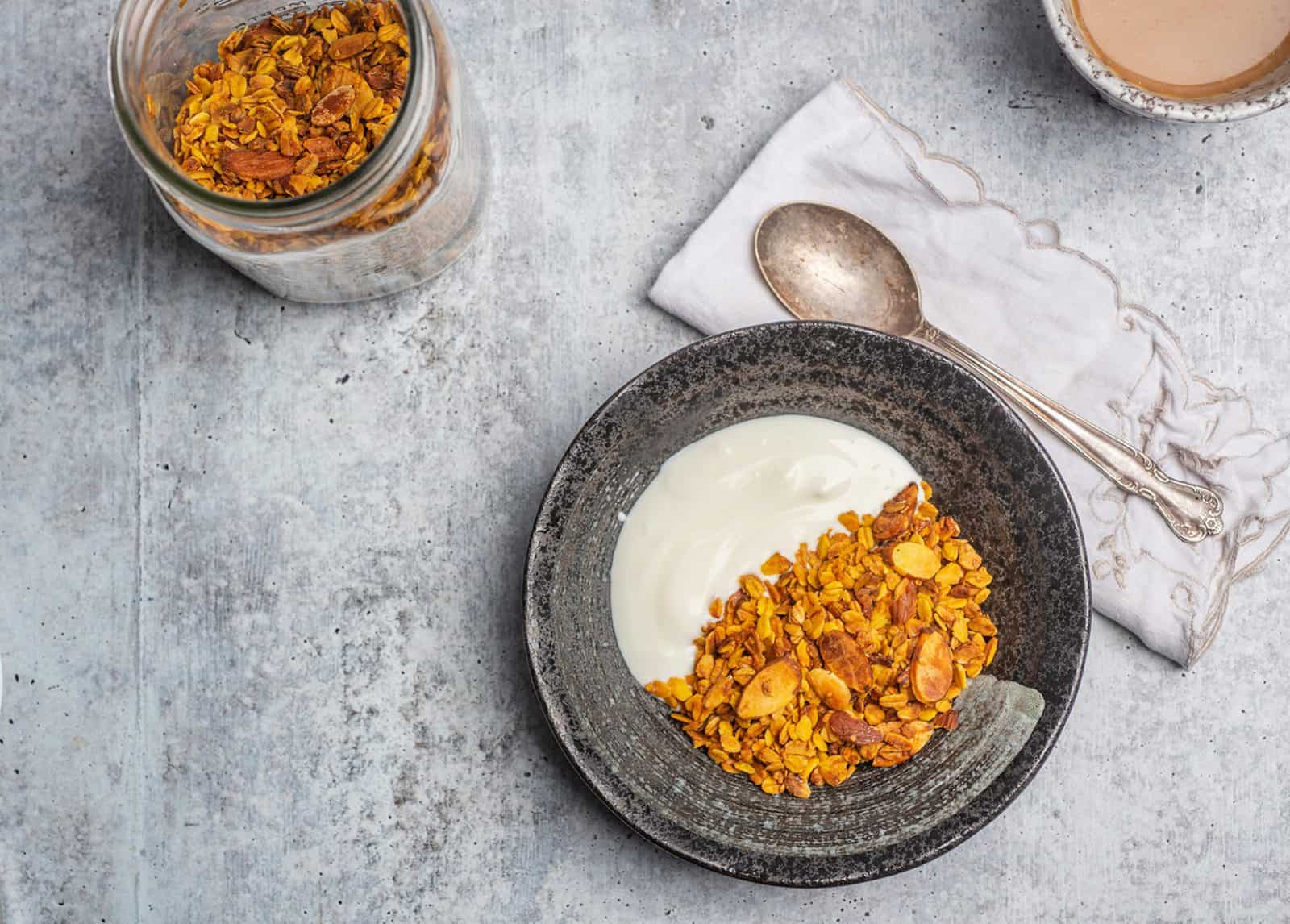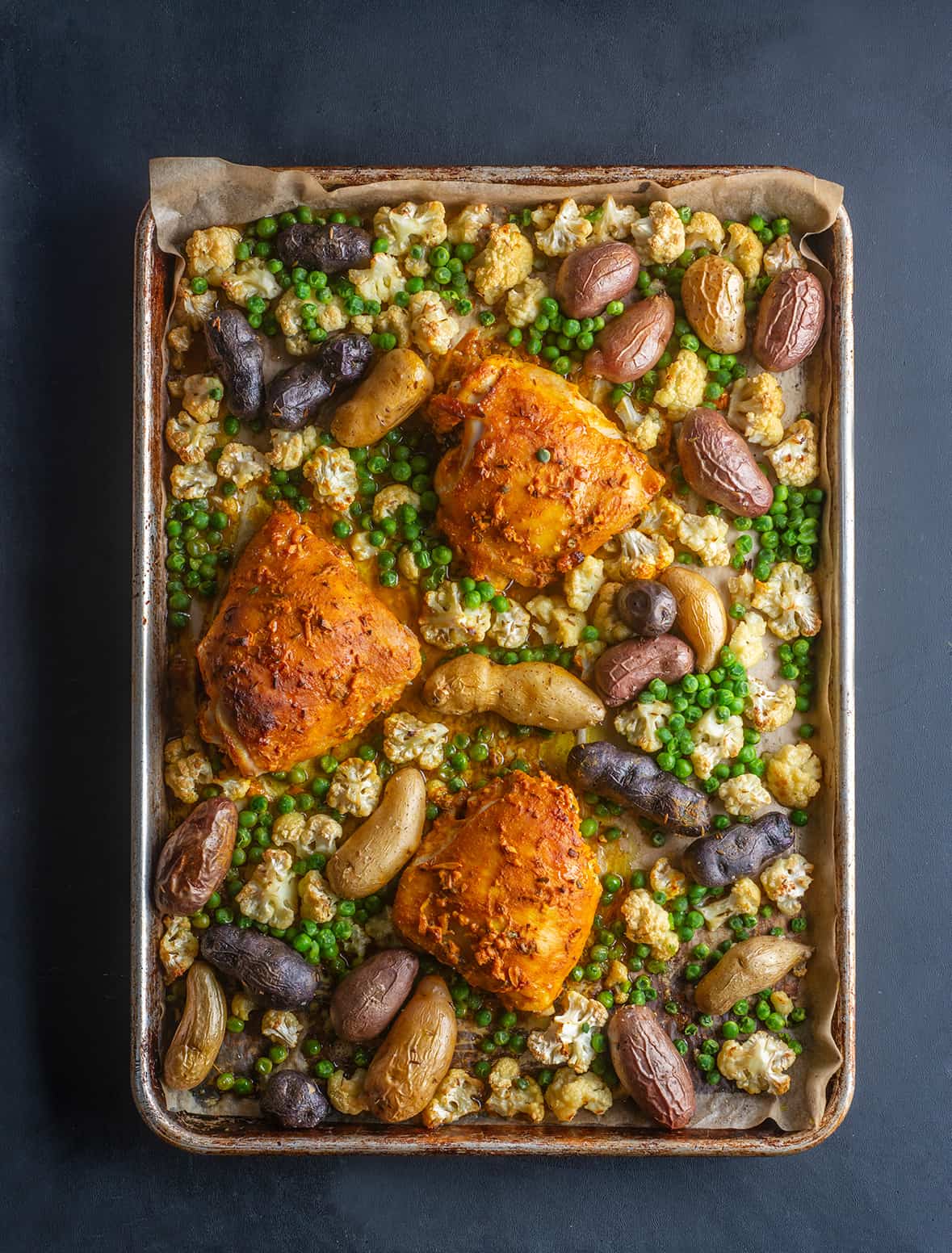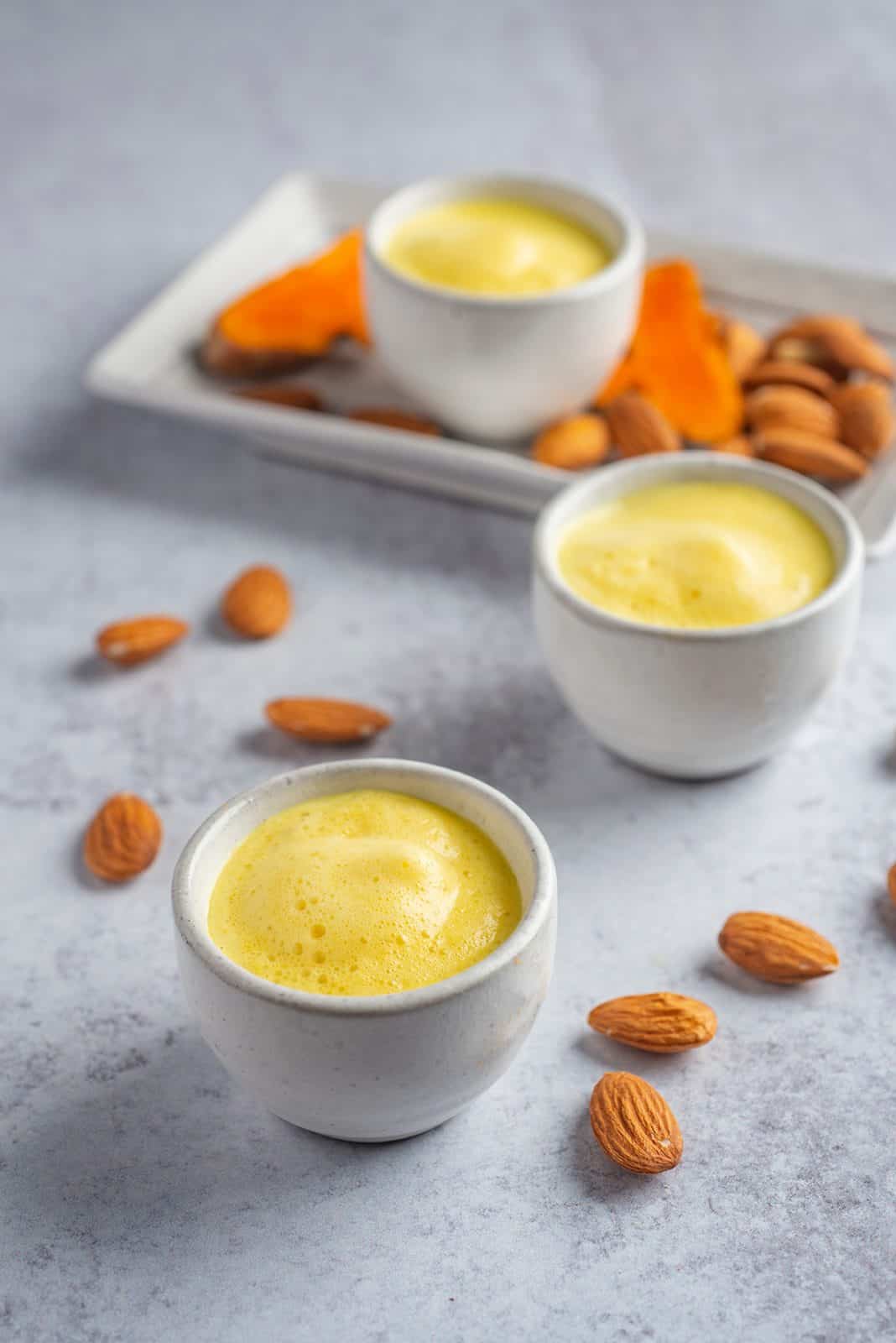By Annie Fenn, M.D. // Photography by Paulette Phlipot
—
Turmeric—a mustard-yellow culinary powder—is best known for spicing up ethnic curries. Back when I was first learning how to cook, I was intrigued by this spice’s pungent and slightly bitter flavor, as it added an exotic flair to my early kitchen experiments. But now I’m captivated by the scientific study of turmeric’s medicinal properties, as well. Certain healthful qualities of turmeric have long been observed by cultures that regularly incorporate it into their diet (think India and Indonesia). In general, these societies have a lower incidence of chronic disease.
But is it the turmeric that creates the Indian people’s supreme quality of health, or is it their primarily plant-based diet?
Science hasn’t teased that out yet.
Hundreds of animal studies document curcumin—one of over 200 active ingredients in turmeric—as having potent anti-inflammatory, memory-boosting, and antioxidant properties.
Not only does this chemical compound give turmeric its golden color, but it may also help protect from oxidative stress, slow the growth of certain cancer cells, and chelate and remove harmful metals, such as copper, from the system. Studies in humans have been disappointing, however. The problem, it seems, is that curcumin has low bioavailability, the ability of your body to absorb an active ingredient instead of metabolizing it into waste.
Curcumin supplements are a popular remedy for chronic pain and other ailments, despite the fact that the active ingredients are not reliably absorbed. But bioengineering curcumin into tiny nanoparticles may change that. A promising study published last year in the American Journal of Geriatric Psychiatry looked at giving early Alzheimer’s patients a nanoparticle curcumin and others a placebo. For the first time ever in a randomized human trial, those who took the curcumin showed significant improvement in memory and other cognitive functions.
TIP NO. 1: About 500 milligrams of
curcumin can quell mild inflammation (each teaspoon of turmeric contains 200 milligrams). If you’re fighting arthritis or chronic pain, work up to 1 1/4 teaspoons three times daily. Start by stirring 1/2 teaspoon into your morning coffee along with a few drops
of honey. Yum!
But until these new and improved supplements have been extensively studied, it’s best to get your curcumin through whole foods: fresh turmeric root (which you grate, just like ginger) and the culinary powdered spice.
Turmeric is an incredibly versatile spice, adding layers of flavor to both sweet and savory dishes. And a few simple tricks may enhance the root’s medicinal qualities, too. For instance, adding black pepper to turmeric can up its bioavailability by as much as 2,000 percent! The one-to-one ratio found in my Turmeric Black Pepper Granola recipe incorporates plenty of pepper to unlock curcumin’s benefits. Plus, it’s just the right combination of pepper and spice for a savory, not-too-sweet breakfast or snack.
TIP NO. 2: The only problem with turmeric
is the sunny yellow stains it leaves on hands and clothing. To avoid yellow splashes, freeze fresh turmeric root before you grate it. To remove it from your hands, gently scrub them with a mixture of sugar and water. For clothing, bleach may be the only answer,
and an apron your
only defense.
Cooking turmeric in a healthy fat (like the yogurt marinade in my Sheet Pan Chicken Tikka) also boosts absorption. When making stews, curries, and soups, add the turmeric directly to the oil while warming it, as heat is another secret weapon to releasing the spice’s potential. And be sure to use only health-promoting fats like avocado, olive, and coconut oil, or ghee.
TIP NO. 3: Turmeric powders vary
depending on quality and shelf life. Buy yours from a reputable spice company to ensure a potent, fresh product. (Spice purveyors like diasporaco.com and
penzeys.com are reputable.)
Turmeric Black Pepper Granola
—
Makes about 6 cups
—
In this savory and sweet granola, the black pepper enhances curcumin’s bioavailability while adding a pleasant balance of heat and spice. Set your peppermill to the finest grind setting or use fresh, finely ground, jarred black pepper.
—
5 cups old-fashioned rolled oats (gluten-free)
1 cup almonds, sliced
¾ teaspoon coarse salt
1 cup pure maple syrup
²⁄3 cup extra virgin olive oil
½ teaspoon almond extract
1 teaspoon vanilla extract
1 teaspoon turmeric
1 teaspoon black pepper, finely ground
- Preheat the oven to 350ºF and place the rack in the center. Line a rimmed, 13-by-18-inch baking sheet with parchment paper or a silicon mat.
- In a large bowl, combine oats, sliced almonds, and salt.
- In a large glass measuring cup, combine maple syrup, olive oil, and almond and vanilla extracts. Whisk with a fork, and then stir in the turmeric and black pepper.
- Pour the olive oil mixture over the oats and stir to combine. Using a rubber spatula, spread the mixture evenly over the baking sheet.
- Bake the granola for 20 minutes, then rotate the baking sheet and bake for another 20 minutes.
- Pull the pan from the oven and carefully inspect the granola. If it’s golden brown throughout and dark brown on the edges, it’s done. If it’s not, return the pan to the oven and watch closely for another 3 to 5 minutes.
- Remove the granola from the oven and allow it to cool in the pan. Transfer the granola to an airtight jar for storage and use.
Sheet Pan Chicken Tikka with lots of Veggies
—
Serves 4
—
When turmeric is combined with whole milk yogurt, it is more readily absorbed into the bloodstream. And, bonus: This streamlined version of Chicken Tikka Masala is baked and served all in the same pan!
—
For the Chicken:
½ cup whole milk yogurt (plain and unsweetened)
1 teaspoon kosher or sea salt
1 3/4-inch piece ginger, peeled and minced
4 cloves garlic, minced or pressed
1 fresh green chili, seeded and minced
½ teaspoon chili powder or cayenne
1 teaspoon turmeric
½ teaspoon cumin
1 teaspoon paprika
1 teaspoon honey
2 pounds chicken thighs (bone-in, skin-on)
For the Vegetables:
3 tablespoons extra virgin olive oil
1 pound potatoes, different colored fingerlings or Yukon Golds
1 head cauliflower, cut into 3/4-inch florets
½ teaspoon kosher or sea salt
½ teaspoon cumin seeds
1 cup peas, fresh or frozen
To Finish:
¼ cup red onion, thinly sliced
¼ cup fresh lemon juice
¼ teaspoon kosher or sea salt
Plain, unsweetened yogurt
1 cup cilantro, parsley, mint, or a mix, chopped
- Combine yogurt, salt, ginger, garlic, fresh chili, spices, and honey in a plastic bag, bowl, or container. Add the chicken pieces and toss to coat evenly. Marinate for at least 15 minutes and up to 24 hours in the fridge.
- Preheat the oven to 425ºF. Line a 13-by-18-inch baking sheet with foil or parchment paper and coat with 1 tablespoon of olive oil. Add potatoes, cauliflower, salt, cumin seed, and the remaining 2 tablespoons of olive oil. Toss together with your hands. Spread the vegetables evenly onto the pan, leaving space to place the chicken.
- Using tongs, lift the chicken from the marinade and place it skin side up on the pan. (Discard the rest of the marinade.) Leave space between the vegetables and chicken to avoid overcrowding. (If you have lots of vegetables, use two pans.)
- Roast the mixture in the oven for 20 minutes, then flip the potatoes and cauliflower to cook evenly.
- Scatter the peas throughout the pan, then return it to the oven for another 10 to 20 minutes for a total of 30 to 40 minutes roasting time (depending on the size of your chicken).
- While the sheet pan meal is roasting, make the pickled onions. Place the red onion slices in a bowl and cover with lemon juice and salt. Set aside.
- To serve your meal, top with pickled onions, dollops of yogurt, and herbs.
* Note: Swap out sweet potatoes for regular potatoes, broccoli for cauliflower, or add any other vegetable, cut into 1 ½-inch pieces. Carrots, eggplant, turnips, or parsnips work well.
Turmeric Almond Milk Shooters
—
Makes about 5 cups
—
The monounsaturated fats in almond milk provide a perfect vehicle for this “just right” dose of turmeric. You can use homemade almond milk (as the recipe instructs) or substitute unsweetened, unflavored almond milk from the grocery store.
—
1 ½ cups raw unsalted almonds
4 cups water, plus more for soaking
½ teaspoon coarse sea salt
1 date, pitted
½ teaspoon turmeric
- Place the almonds in a deep bowl and cover them with fresh water. Soak overnight at room temperature or up to 12 hours. Rinse them in a colander, discarding the soaking water.
- Place the soaked almonds, fresh water, salt, date, and turmeric in a high-powered blender (or Vitamix). Blend on high speed for 5 minutes or until the nuts are pulverized and the mixture is smooth.
- Pour the almond milk through a nut milk bag or doubled up cheesecloth placed over a large bowl. Squeeze to extract all of the milk from the pulp.
- Pour the milk into a glass jar with a tight fitting lid. Store it in the refrigerator for up to 3 days. Shake well before use.
- Warm a desired amount of almond milk, add turmeric, and froth it gently in a blender before serving.



